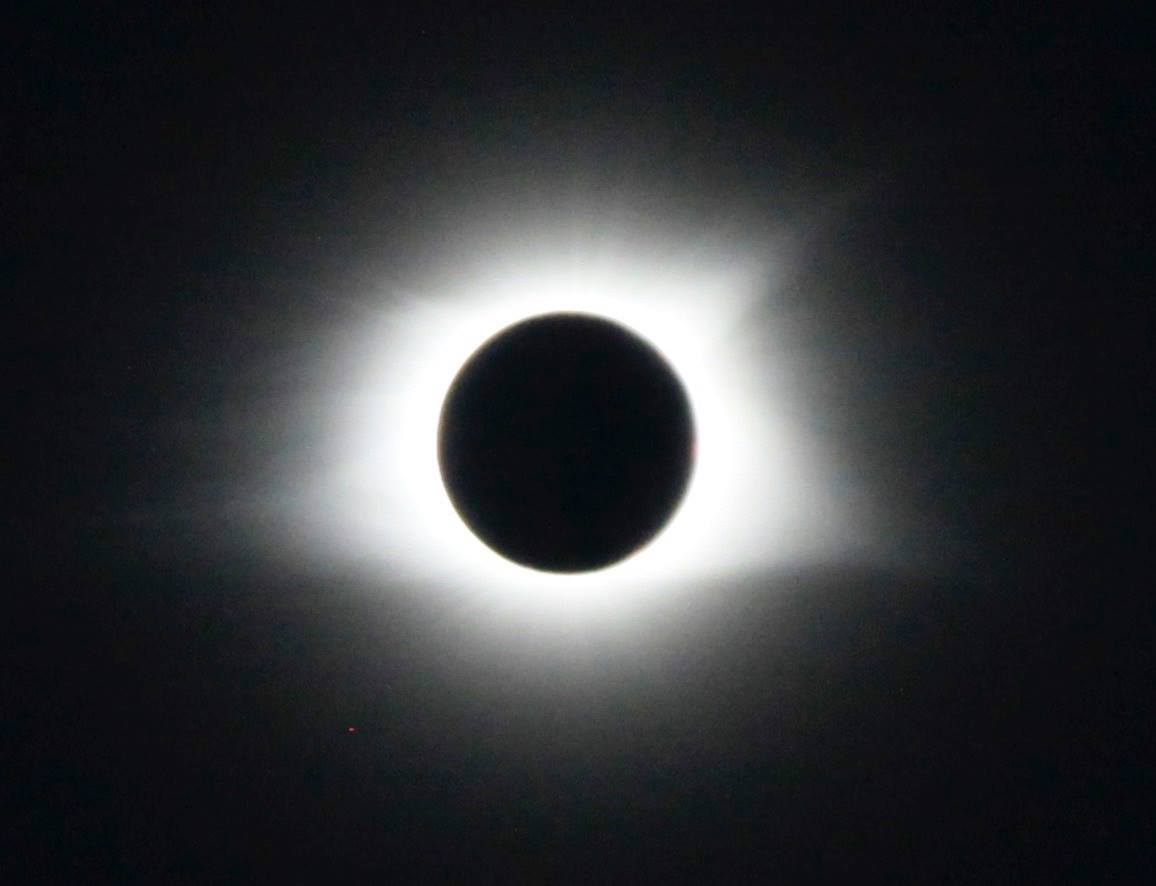
FRANKFORT, Ky. — Kentucky state and local agencies are preparing for an influx of travelers during the total solar eclipse that will sweep across 13 states on the afternoon of Monday, April 8, 2024. The celestial event is expected to bring at least 150,000 visitors to several Western Kentucky counties, with more than 1 million travelers expected to drive through Kentucky to viewing spots along the main path in Ohio, Indiana and Illinois.
“The solar eclipse will be a memorable and fun event for many Kentucky families,” said Gov. Andy Beshear. “I encourage Kentuckians who intend to watch it to plan early to make this event safe for all. Choose your viewing location in advance, expect increased traffic and remember to take essentials, like protective eyewear and water.”
According to NASA, a total solar eclipse is when the moon passes between the sun and Earth, blocking the sun’s light. The phenomenon happens when the Earth, moon and sun are aligned and only the corona of the sun is visible, like a halo. This rare event can be observed only in specific regions.
The Kentucky Transportation Cabinet (KYTC) is working with Kentucky Emergency Management (KYEM), Kentucky State Police (KSP) and local emergency agencies on event impacts, including the potential traffic issues that may arise from thousands of visitors traveling through the commonwealth.
The total solar eclipse will impact eight Kentucky counties and clip portions of four others. The totality phase will enter Kentucky around 2 p.m., CDT, in parts of Fulton and Hickman counties before rolling across Ballard, McCracken, Livingston, Crittenden, Union and Henderson counties along the Ohio River. It also clips small portions of Carlisle, Graves, Webster, and Daviess counties.
“Ensuring smooth traffic flow is crucial for everyone’s safety,” said KYTC Secretary Jim Gray. “Motorists should refrain from parking on or along highways during the solar eclipse to ensure first responders have a path to respond to emergencies.”
The total eclipse will last about one to three minutes in Kentucky. Major cities along its path include Paducah, Morganfield and Henderson. Areas to the north in Ohio, Indiana and Illinois will have four minutes or more of totality, so increased traffic is likely in Northern Kentucky counties that border viewing sites in neighboring states.
Traffic into and through Western Kentucky along Interstate Highway 24, Interstate Highway 69 and U.S. Highway 41 is expected to be congested, as is traffic along the Pennyrile Parkway and the U.S. Highway 68/Kentucky Highway 80 corridor before, during and after the eclipse. The eclipse could add traffic to Interstate Highway 165 and U.S. Highway 231, as well as Interstate Highways 64, 65, 71, 75, 165 and other corridors and back roads, as well as Ohio River crossings where traffic passes through Kentucky.
Several local communities in the total viewing path are organizing eclipse-related events on April 8. For more information visit the Kentucky tourism website.
“Kentucky is thrilled to be in the path of totality for the 2024 total solar eclipse, and communities in the area have an exciting array of activities and watch parties scheduled,” said Tourism, Arts and Heritage Cabinet Secretary Lindy Casebier. “We encourage folks to make plans for accommodations now. This will be a truly special occasion; we look forward to hosting folks from near and far.”
Spectator Tips for a Safe Event
Transportation officials offer the following suggestions for event goers:
- Get eclipse-viewing glasses early. Regular sunglasses are not safe.
- Fill up your gas tank before traveling in the event of traffic delays.
- Do not stop along highways or emergency shoulders.
- Do not take pictures while driving. Exit the highway to view or photograph the event.
- Turn on headlights.
- Drive alert and watch for pedestrians.
- Come early, stay late. This will help minimize major traffic delays.
- Plan ahead. Book accommodations early and select a viewing destination before you travel. Locations with restrooms and food will be in high demand.
- Travel with enough food and water for everyone in your vehicle. Expect lines at restaurants, convenience stores and grocery stores.
- Check the local weather.
Looking directly at the sun, even during an eclipse, can cause eye damage. Protective glasses specifically made to view solar eclipses must be used for safe viewing.
Business owners are advised to schedule the early delivery of critical supplies and inventory, such as food and fuel. They may want to consider flexible work schedules or advise employees to plan extra travel time to work.
Additional eclipse resources are available at:
http://www.GreatAmericanEclipse.com
https://science.nasa.gov/eclipses/future-eclipses/eclipse-2024/


















